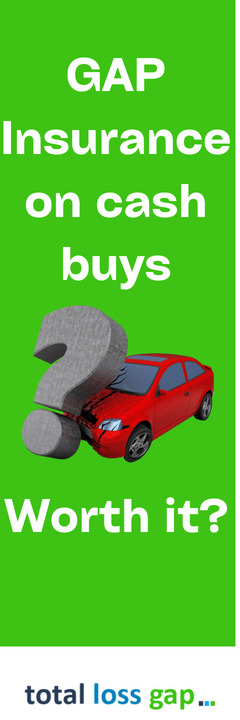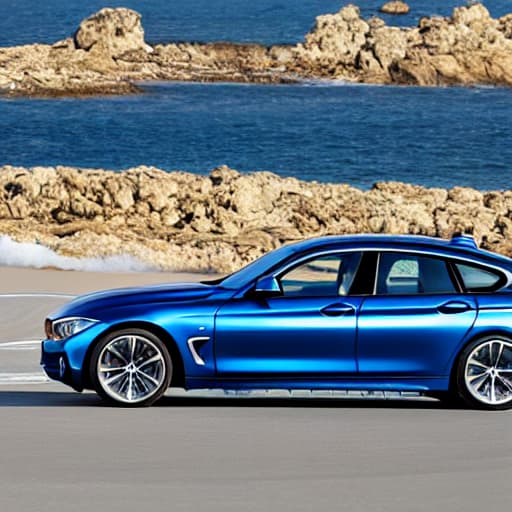Call Monday-Friday 9am - 6pm Closed Saturday & Sunday



[ Contact Us ]
Need Help? Calling from a mobile please call 0151 647 7556
0800 195 4926Do you have a question? or need help?
Call Monday-Friday 9am - 6pm Closed Saturday & Sunday,
GAP Insurance, or Guaranteed Asset Protection insurance, is an optional coverage that protects car owners from the financial risk of a total loss in the event of an accident or theft. While many believe GAP insurance is only necessary when financing a vehicle, it can also provide valuable protection for cash purchases. Here, we will explore the benefits of GAP Insurance for cash buyers and help you determine if it's the right choice for you.
GAP insurance covers the difference between the market value of your car at the time of a total loss and the amount you originally paid for it. This difference, known as the "gap," can be significant due to the depreciation of the vehicle's value over time.

New cars lose a significant portion of their value within the first few years of ownership, with the most substantial drop occurring in the first year. As a result, even a relatively new vehicle can have a significantly lower market value than its purchase price. In the event of a total loss, standard comprehensive insurance will only cover the car's market value, leaving you responsible for the remaining amount.
Contrary to popular belief, GAP insurance policies are not exclusive to financed vehicles. Cash buyers can also benefit from this coverage, as it protects them from the financial consequences of depreciation. With GAP insurance, you can be compensated for the difference between your car's market value and its original purchase price or the future replacement cost, thus ensuring you can replace your vehicle without incurring additional expenses.
The critical difference with GAP Insurance, where there is no outstanding finance balance to be concerned with, is that the total settlement comes to you.
When considering whether to buy GAP insurance for a cash purchase, it's essential to weigh the benefits against the cost of the policy. Here are some factors to consider:
See: Should I get GAP Insurance?
Return to Invoice GAP Insurance is a type of Guaranteed Asset Protection (GAP) insurance that aims to cover the difference between the market value of a vehicle at the time of a total loss and the original purchase price stated on the invoice. This Gap Insurance coverage benefits cars purchased outright, as it can protect the owner from the financial consequences of depreciation in the event of an accident or theft.
The owner is responsible for the total purchase price when a vehicle is purchased outright without a finance agreement. Suppose the car is involved in an accident or stolen and subsequently declared a total loss by the insurer. In that case, the comprehensive insurance policy will only cover the vehicle's current market value. Due to depreciation, this amount is often lower than the original purchase price, potentially leaving the owner with a significant financial loss.
In such a situation, Return to Invoice GAP Insurance comes into play. This coverage will bridge the gap between the market value provided by the comprehensive insurance policy and the original invoice price of the vehicle. Doing so ensures that the owner can recover the total amount they initially paid for the car, allowing them to purchase a comparable replacement vehicle without incurring additional out-of-pocket expenses.
Car paid in full: £25,000
Insurer payout after total loss: £18,000
Return to Invoice GAP pays: £7,000
£18,000 + £7,000 gets you your original invoice price back
Vehicle Replacement GAP, or VRI GAP, is a type of Guaranteed Asset Protection (GAP) insurance designed to cover the difference between the market value of a vehicle at the time of a total loss and the cost of a replacement vehicle of the same make, model, and specification. This coverage is helpful for cars purchased outright, as it can protect the owner from the financial impact of depreciation and potential price increases in the event of an accident or theft.
The owner is responsible for the entire purchase price or replacement cost when a vehicle is purchased outright without a finance agreement. Suppose the car is involved in an accident or stolen and subsequently declared a total loss by the insurer. In that case, the comprehensive insurance policy may only cover the vehicle's current value. Due to depreciation, this amount is often lower than the original purchase price, and more is needed to cover the cost of a brand-new replacement vehicle (if you originally bought a new car).
In such a situation, a Vehicle Replacement GAP policy comes into play. This coverage will bridge the gap between the market value provided by the comprehensive insurance policy and the cost of a replacement vehicle of the same make, model, and specification as the original car was on the day of purchase. Doing so ensures the owner can acquire a comparable vehicle without incurring additional out-of-pocket expenses.

How does a Vehicle Replacement Gap policy work in terms of calculating the cost of a replacement vehicle? This all depends on the vehicle you first purchased. If it was a brand new car, where you are the first registered keeper of the vehicle, then it is the cost of the equivalent replacement vehicle, brand new, when you claim.
For example, you buy a brand new Kia Sportage 1.6T Phev GT Line in 2023 for £51,000, drive it for two years and cover 15,000 miles. Then in 2025, the vehicle is stolen and written off by the motor insurer as a total loss. The market value may then only be £35,000. The equivalent brand new Kia Sportage may now be £54,000
With no outstanding finance balance to pay a finance company, the full settlement of £54,000 would come to you.
Vehicle Replacement GAP works on both new and used cars. The critical aspect to remember is that the VRI Gap covers you back to the cost of the equivalent replacement car in the event of a claim. In the case of a used car, that means the same age, mileage and specification as your car was on the day you bought it.
In the case of a used vehicle, then it is not the cost of a new replacement.
So let's say you buy a two-year-old Ford Kuga 1.5 Ecoboost with 15,000 miles for £20,000 in 2023. In 2025 the Kuga is stolen, and your car insurance settles the current replacement cost of £15,000. The equivalent replacement vehicle is now £22,000 for another two-year-old Ford Kuga Ecoboost with 15,000 miles.
Agreed Value Gap Insurance, or Return to Value Gap insurance, is slightly different than the RTI or VRI forms of GAP Insurance. With Invoice or Replacement GAP the sale must be linked to a purchase from a VAT-registered motor dealer. With Agreed Value, the vehicle can be purchased from a private seller with some cover.
The basis of an Agreed Value GAP insurance policy is that an agreed value between the insurer and the policyholder is established at the start of cover. This will be based on a combination of factors such as make, model, age and mileage and determined by an industry-recognised valuation tool, like Glass' Guide. The agreed value is then used to calculate the payout should you need to claim during the period of cover (which can last up to 4 years).
This question is a challenge to answer. However, some types of GAP Insurance are utterly useless for outright purchases. Any form of finance GAP Insurance, negative equity gap insurance or lease or contract hire gap insurance is of no value when you buy a vehicle in full, with cash.
Why?
Simply you have no financial settlement to worry about. You have paid for the vehicle from your funds. So if your car is in an accident, written off or stolen, only your resources or savings have suffered a dent.
Vehicle Replacement GAP Insurance can be a better option than Return to Invoice GAP Insurance cover in the event of a claim for several reasons:
Vehicle Replacement GAP Insurance could provide car owners who bought their vehicle using their own cash, with no finance agreement, with a higher level of financial protection in the event of a total loss. By covering the cost of a brand-new replacement vehicle rather than just the original invoice price, this insurance offers enhanced protection against depreciation and potential price increases.
Buying GAP insurance can provide valuable protection for financed and cash car purchases, particularly in the early years of ownership when depreciation is most significant. To determine if GAP insurance is right for you, assess your vehicle's depreciation rate, intended ownership duration, and financial risk tolerance. By carefully considering these factors, you can make an informed decision that best suits your needs and safeguards your investment.

Yes, there is a range of GAP products available, detailed above.
Not necessarily. If you are happy with the motor insurers' settlement to buy a replacement car, then great. However, if you buy GAP insurance, it can cover any shortfall between the motor insurers' settlement and what you paid for the original car or the replacement cost.
This can save you from dipping into your own funds or resources to pay for a replacement.
Yes, typically, you have a window after buying the car to purchase gap insurance. With our Total Loss Gap brand, it can be up to 180 days, or even 365 days, in certain circumstances on a new car.
Buying a Return to Invoice or Vehicle Replacement Gap on a financed car purchase means a slight difference from paying cash. It simply means you have to pay off the remaining finance settlement from the overall settlement you get.
Probably not, or there are fewer options. If you are outside the window for RTI or VRI GAP Insurance for your car, you could still look at Agreed Value Gap cover in some circumstances.
Find out about the Different Types of GAP Insurance